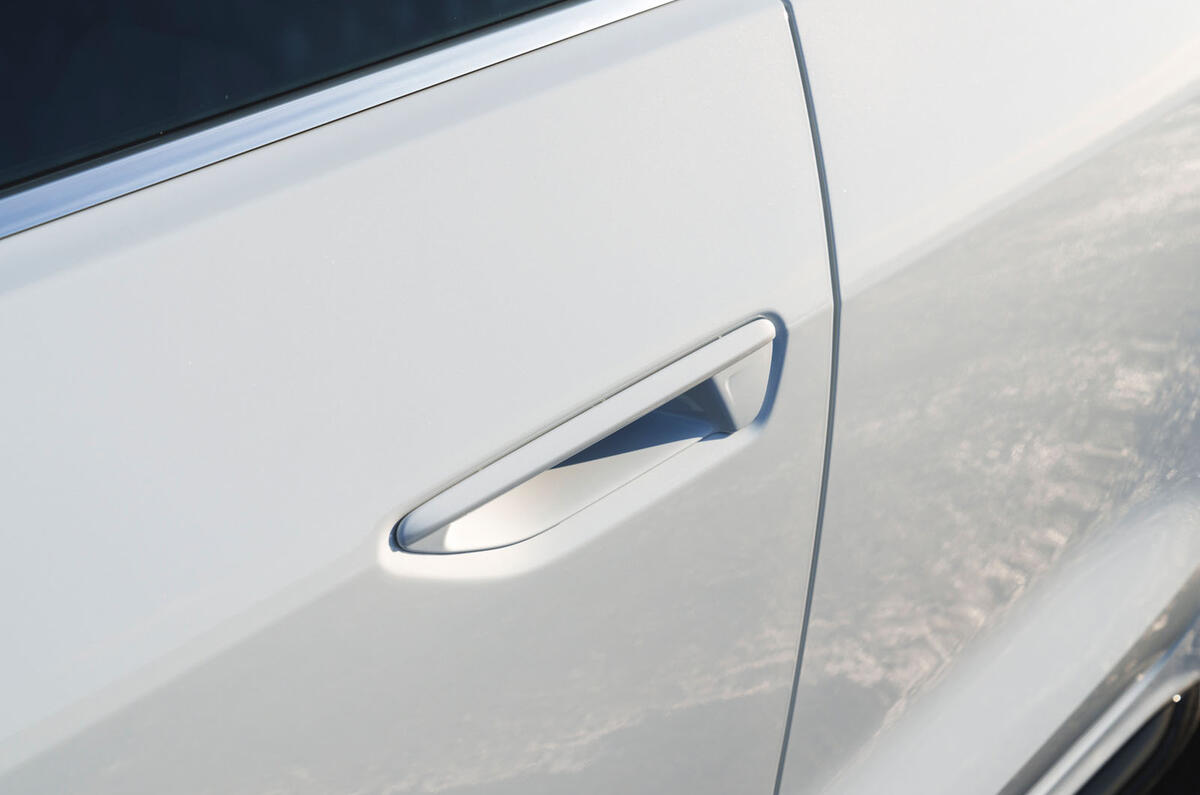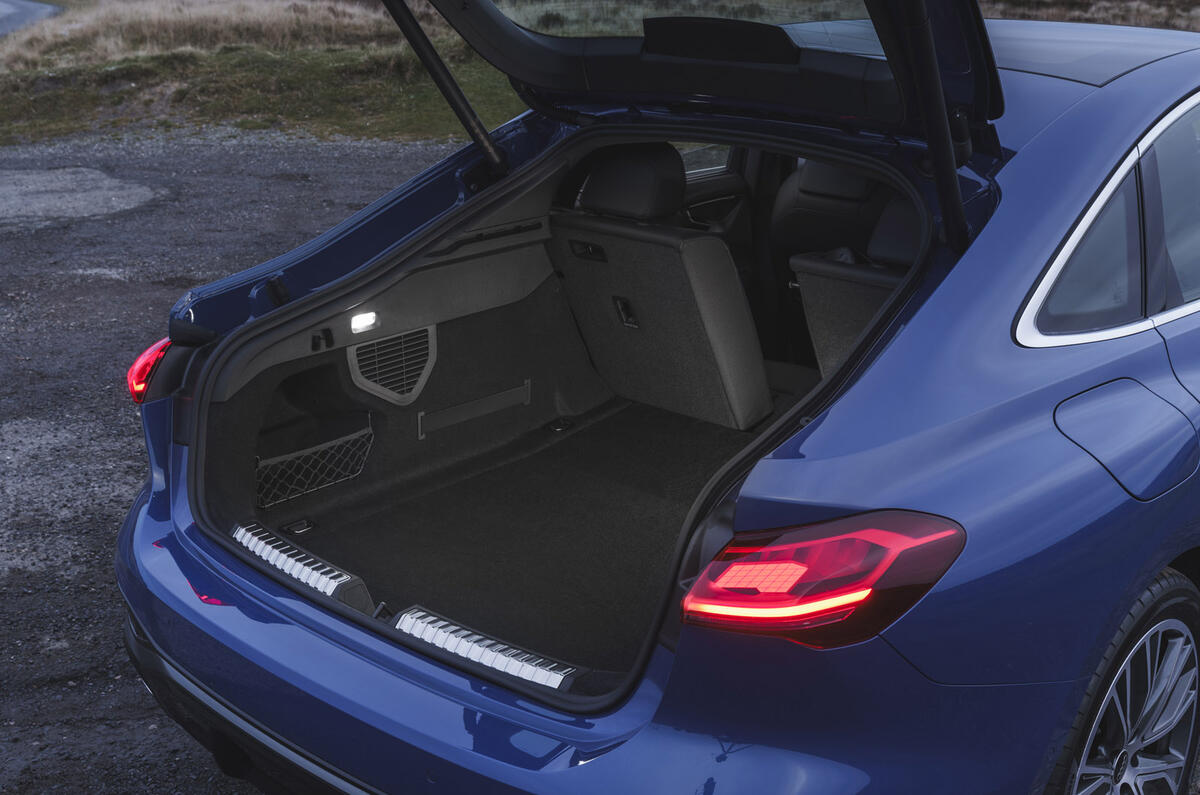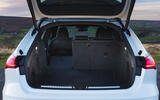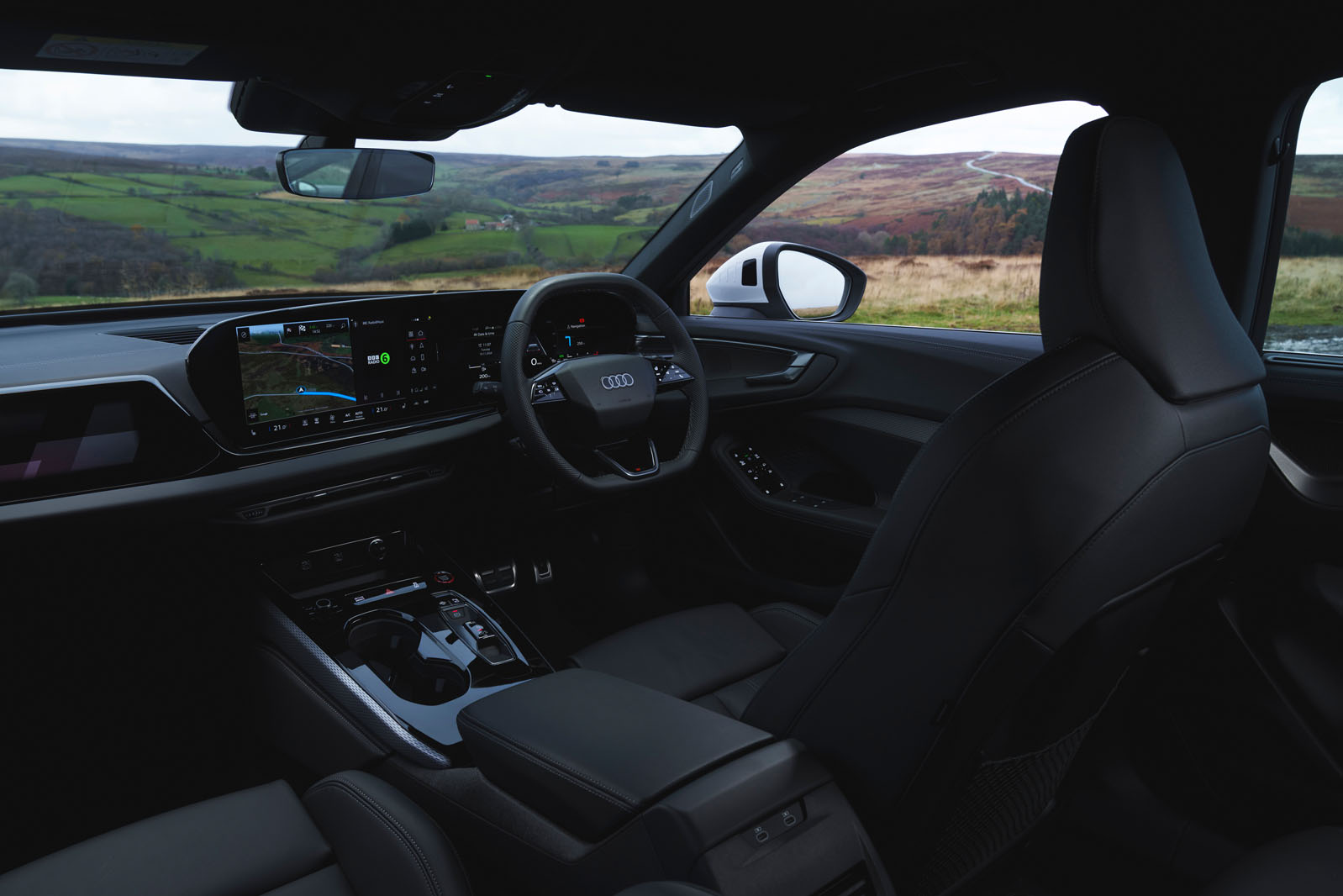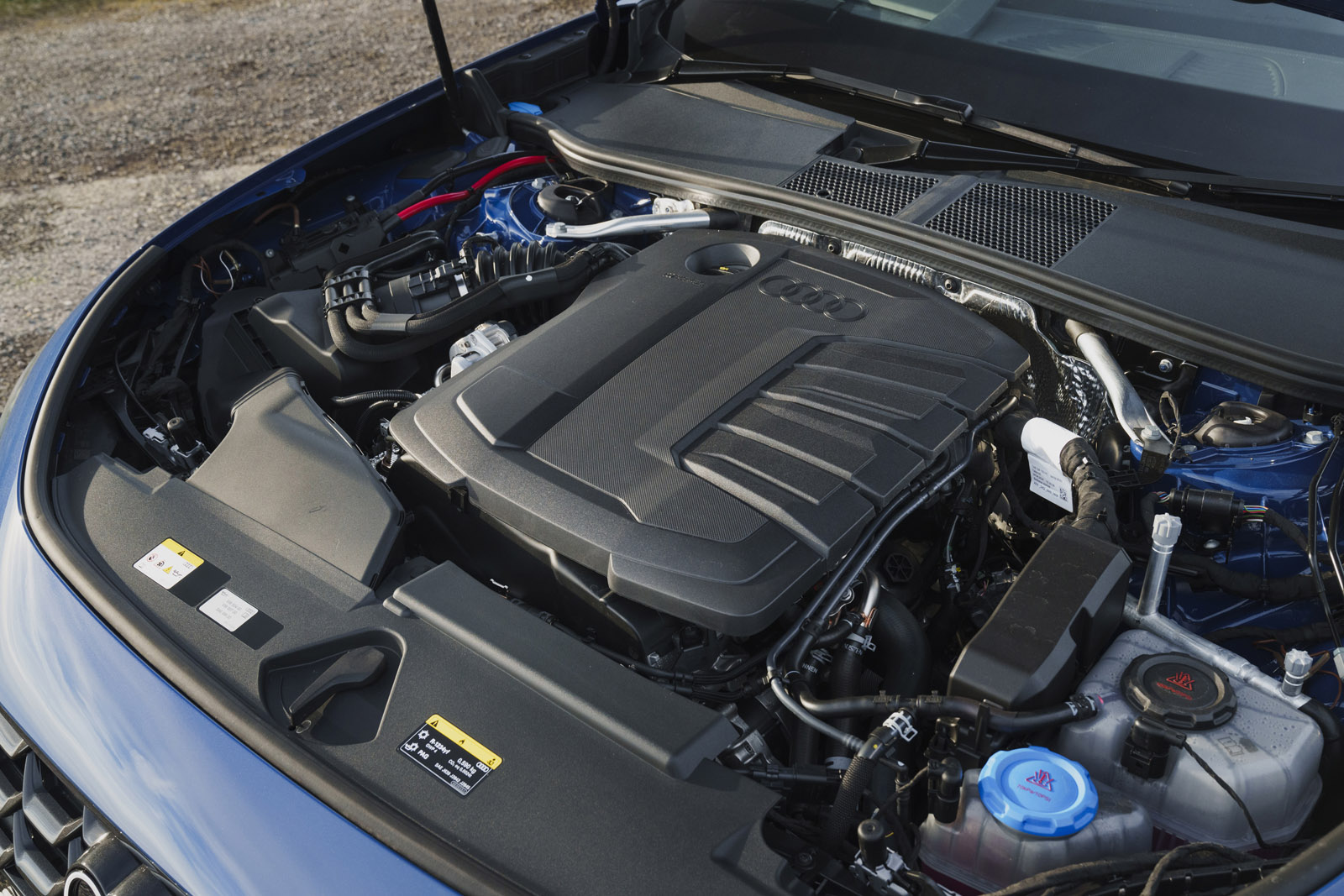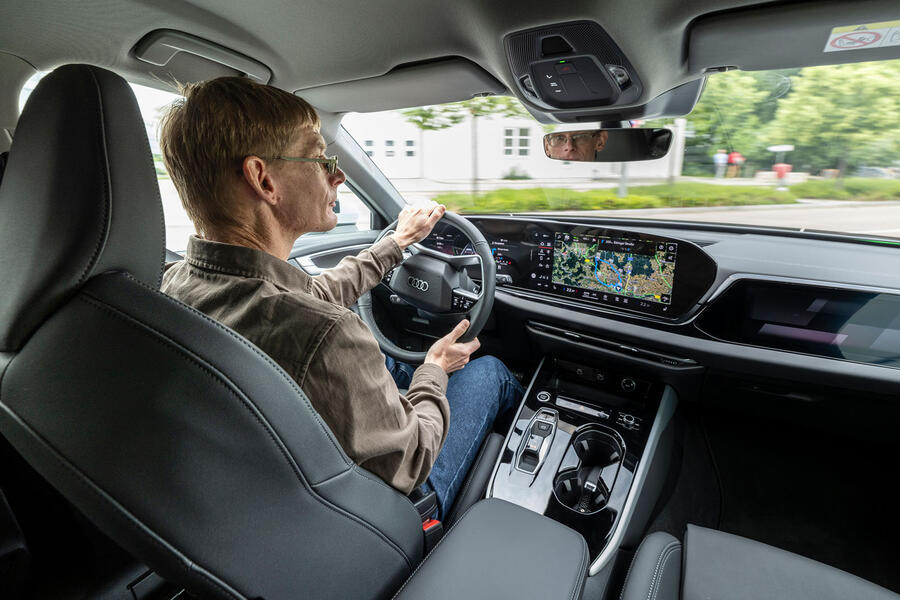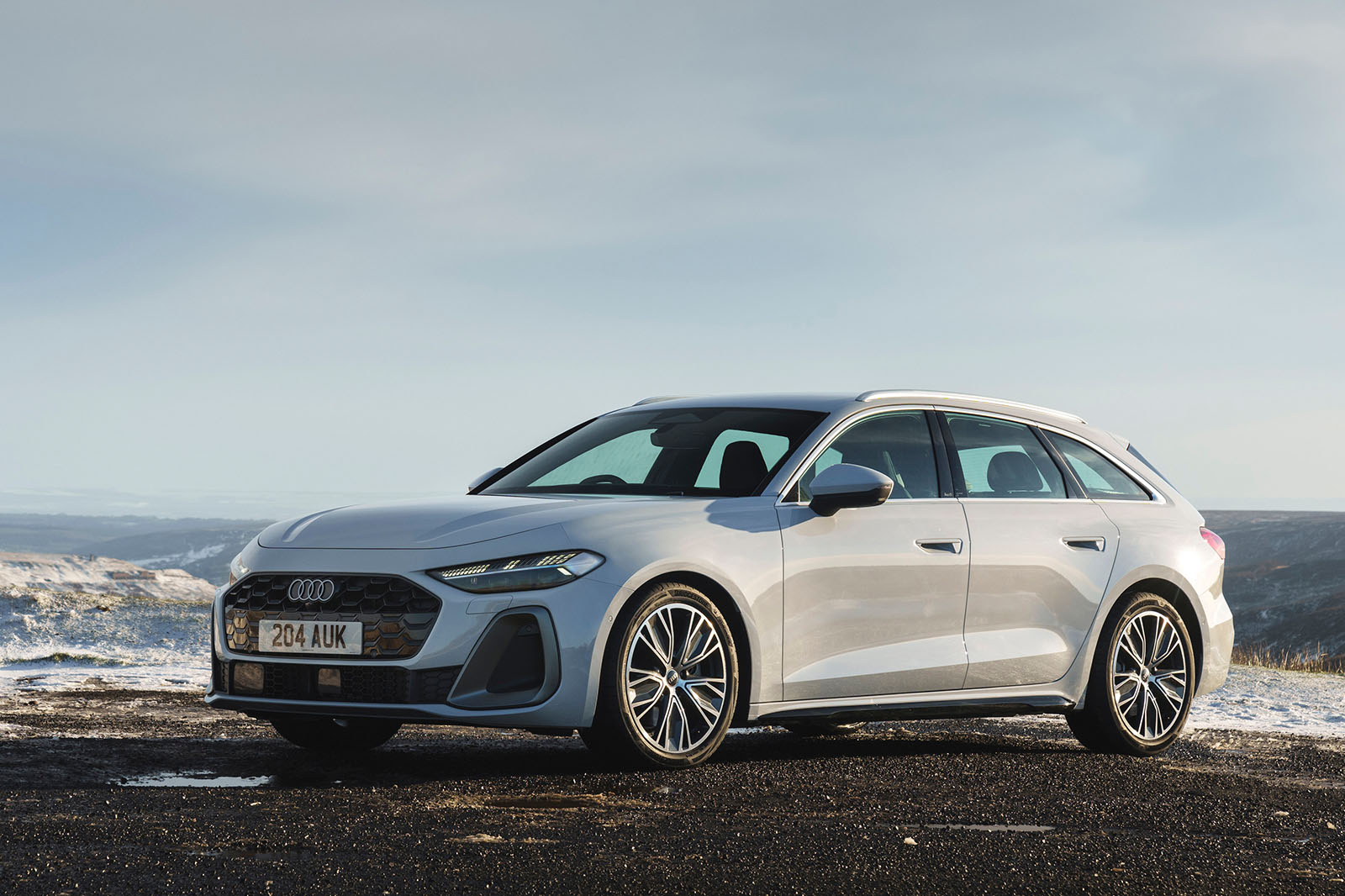The standard hybrid system suits the A5 quite well. An engine isn't very efficient in low-speed running and doesn’t even give you back much in sound or character. If you can shut it down and run on electricity instead, that’s a win-win.
The motor emits a gentle whine when speeding up or regenerating energy, but it gives the whole thing a bit of character, rather than impacting refinement.

If the engine is running, the dual-clutch automatic gearbox can be slightly clunky at low speed. The rest of the time, though, it does a good job and has lost the habit of keeping the revs excessively low.
The 2.0-litre diesel four itself is a pleasant known quantity. Although it’s clattery from cold, it quietens as it warms up and provides plenty of effortless shove.
Audi says diesel sales in the UK are likely to linger in the single-figure percentages, but it’s continuing to offer them because they’re still popular in Germany and even that quiet UK business will mean it may pick up few hundred sales from BMW, which has pulled the 320d and 330d from the market.
The vast majority of UK-bound A5s will be the 2.0 TSI, which is available with 148bhp or 201bhp. We've only driven the basic 148bhp one, but were surprised by how quiet and torquey it is. It’s not an engine you want to take to the redline any more than you have to, but that’s pretty typical of today’s mainstream four-pots. It's supposedly a whole 2sec slower to 62mph than the more powerful version, but we wouldn't be surprised if Audi is understating the performance of the 148bhp one. While a torque-converter might be smoother, the seven-speed dual-clutch automatic gearbox here gets the job done fairly unobtrusively.
Audi’s engineers told us that they decided not to put the hybrid system on the 2.0-litre petrol in order to keep costs down on what is the entry-level offering, which checks out when you look at the price premium for the diesel.
For our impressions of the 3.0-litre V6, read our separate Audi S5 review.
On the E-hybrid PHEV version, the electric motor draws power from a 20.7kWh (usable) battery, which uses a new cell-to-pack design and revamped chemistry. It offers an electric-only range of 62.1 miles for the Avant (stretching to 62.8 miles for the saloon), which is about the same as a BMW 330e. Official combined fuel economy is 108.6mpg, for what that’s worth.
A triple-clutch gearbox layout allows the engine and e-motor to be fully disengaged when the other is running, a set-up that, Audi says, means the combustion engine runs more efficiently when the battery is empty: it will still achieve 40.5mpg.
There are three levels of regenerative braking. By default the car runs in EV mode and tries to power itself by electricity for as long as possible; or if you have a destination programmed in, the sat-nav will automatically adjust for maximum efficiency. In Hybrid mode, you can specify a custom charge level for the battery to be maintained at.
Notably, the A5 is significantly better to drive in Hybrid mode than under petrol power alone.
With a charged battery, this A5 E-hybrid feels close to an EV: there’s a hit of electric torque from pick-up, it’s pleasingly smooth and the lack of engine noise shows how much heavy lifting the electric motor is doing.
When the engine is engaged, usually at higher speeds on the motorway or country roads to smooth out the electric power or help feed a bit of juice back into the battery, the transition is almost seamless.









